Hollis Jeffcoat
Name: Hollis Jeffcoat
Gallery: Watson MacRae Gallery, Sanibel Island, FL
Her Art
Hollis Jeffcoat was a highly accomplished, well-regarded and critically acclaimed Abstract Expressionist. She lived, worked and taught in France, Canada, New York City and Southwest Florida. Over the course of her illustrious 41-year career, her paintings were the subject of more than 20 solo and nearly 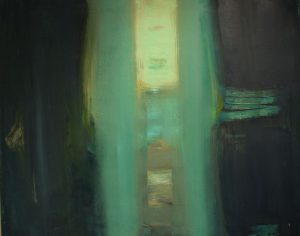 four dozen group exhibitions in the U.S., Canada and France. She died in Fort Myers on April 28, 2018.
four dozen group exhibitions in the U.S., Canada and France. She died in Fort Myers on April 28, 2018.
During the final years of her life, Jeffcoat explored the relationship between color and sound. A chromesthetic, Hollis saw color every time she heard a sound. “It’s always been that way for me, and I thought that’s the way it was for everyone else too,” she once confided. “It wasn’t until I was in my mid-20s 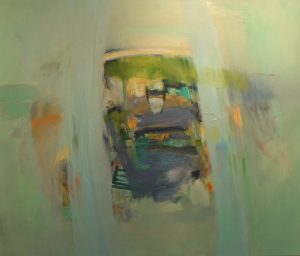 [living in Paris] that I found out otherwise.”
[living in Paris] that I found out otherwise.”
Chromesthesia is a subset of synesthesia, a neurological phenomenon in which the stimulation of one sensory or cognitive pathway (such as hearing) leads to automatic, involuntary experiences in a second cognitive pathway (such as sight). Some studies suggest that as few as 1 in 2,000 or as many as 1 in 23 people experience some degree of synesthesia. 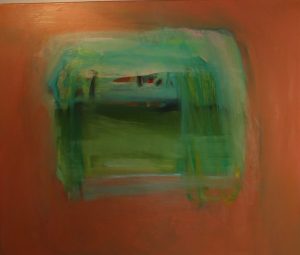 For chromesthetics like Hollis, everyday sounds like music, dogs barking and people talking trigger the perception of colors (called photisms).
For chromesthetics like Hollis, everyday sounds like music, dogs barking and people talking trigger the perception of colors (called photisms).
Living on Sanibel since 2008, Jeffcoat immersed herself in the island’s unique panoply of sounds. She filled her creative soul with the gentle sound of water slapping mangrove knees, evening zephyrs stirring palm fronds and the chirps and calls of Reddish Egrets, 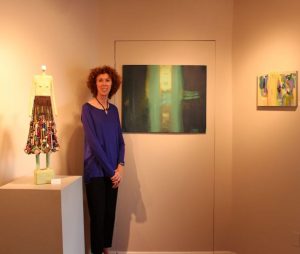 Roseate Spoonbills and Yellow-crowned Night Herons. For Jeffcoat, water lapping along the shoreline and the warble of native ospreys gave rise to her most intense synesthetic experiences.
Roseate Spoonbills and Yellow-crowned Night Herons. For Jeffcoat, water lapping along the shoreline and the warble of native ospreys gave rise to her most intense synesthetic experiences.
“Because I’m so attuned to nature, I see different shades, hues and intensities of green,” Hollis once explained. They burst like fireworks across her mental movie screen before morphing like a kaleidoscope or fading as the sound changed, 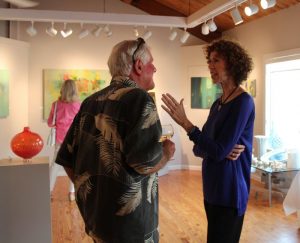 got louder or abruptly ended.
got louder or abruptly ended.
“In effect, my subject is color making space based on nature,” Jeffcoat maintained. “That space is created by the rhythm of colors instead of constructing a series of outward mounting planes.”
While one might expect that an abstract expressionist or colorist would regard chromesthesia as a creative 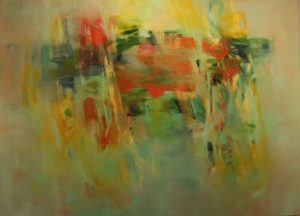 gift, Jeffcoat did not consciously incorporate her synesthetic experiences into her art until 2014, when she debuted Sound of the Osprey, a high-spirited, energetic painting that many others could “hear” too. Until then, her education and training compelled her to ignore or sequester her chromesthesia when it came time to apply pigment to linen. As none of her
gift, Jeffcoat did not consciously incorporate her synesthetic experiences into her art until 2014, when she debuted Sound of the Osprey, a high-spirited, energetic painting that many others could “hear” too. Until then, her education and training compelled her to ignore or sequester her chromesthesia when it came time to apply pigment to linen. As none of her 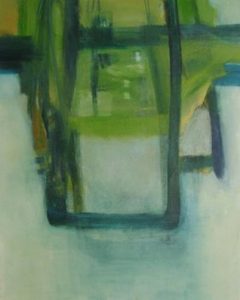 teachers were synesthetics, they had no way of showing her how to express the ways in which the sounds she heard transformed into visual stimuli. [Jeffcoat studied at the Kansas City Art Institute and York Studio School; her instructors included Mercedes Matter, Philip Gaston, Andrew Forge, Meyer Shapiro, Jack Tworkov and George McNeil. She also apprenticed for three years with Joan Mitchell in France and took lessons from and taught for local legend Gail Bennett.]
teachers were synesthetics, they had no way of showing her how to express the ways in which the sounds she heard transformed into visual stimuli. [Jeffcoat studied at the Kansas City Art Institute and York Studio School; her instructors included Mercedes Matter, Philip Gaston, Andrew Forge, Meyer Shapiro, Jack Tworkov and George McNeil. She also apprenticed for three years with Joan Mitchell in France and took lessons from and taught for local legend Gail Bennett.]
But it is hard to suppress a creative impulse like chromesthesia, and art history is filled with examples of artists, composers, poets, 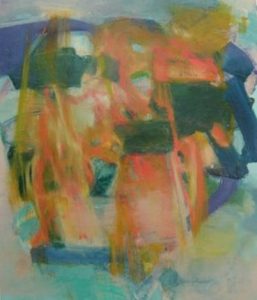 novelists and digital artists who didn’t.
novelists and digital artists who didn’t.
Isaac Newton proposed that musical tones and color hues shared frequencies, as did Goethe in Theory of Color. Russian artist Wassily Kandinsky combined four senses in his paintings, vis: color, hearing, touch and smell. Although Mondrian was not synesthetic, he too experimented with image-music consequences in his work. New art movements such as literary symbolism, non-figurative art and visual music have benefitted from experiments with synesthetic perception, and many contemporary artists now use their synesthesia to create their art.
Soon after she 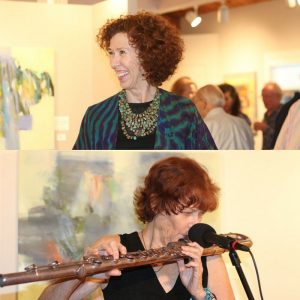 decided to embrace her unique way of experiencing the world, she entered into a groundbreaking collaboration with Peabody, Edward R. Murrow and Emmy Award-winning composer and flutist Kat Epple to create an exhibition titled the Sound of Color. But the two did not get together in an art or sound studio. That would be too regimented for Jeffcoat, who steadfastly refused to force a synesthetic response at the advent of a painting session.
decided to embrace her unique way of experiencing the world, she entered into a groundbreaking collaboration with Peabody, Edward R. Murrow and Emmy Award-winning composer and flutist Kat Epple to create an exhibition titled the Sound of Color. But the two did not get together in an art or sound studio. That would be too regimented for Jeffcoat, who steadfastly refused to force a synesthetic response at the advent of a painting session.
Instead, Jeffcoat immersed herself in music from Elemental Circuitry, 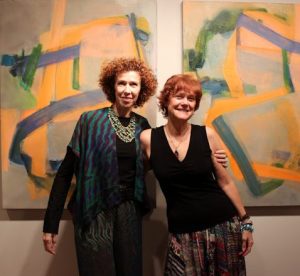 an album Epple recorded with Nathan Dyke. (It was one of the best Ambient-Chillout-Downtempo albums of 2015.) After internalizing the notes and melodies, Jeffcoat produced a handful of oils, including Gliding Over Treetops, Journey to Timbuktu I, Journey to Timbuktu II and Expedition, a diptych she had abandoned several months earlier because it was not unfolding as she’d envisioned.
an album Epple recorded with Nathan Dyke. (It was one of the best Ambient-Chillout-Downtempo albums of 2015.) After internalizing the notes and melodies, Jeffcoat produced a handful of oils, including Gliding Over Treetops, Journey to Timbuktu I, Journey to Timbuktu II and Expedition, a diptych she had abandoned several months earlier because it was not unfolding as she’d envisioned.
“When I listened to Kat’s Expedition, the colors that came, the 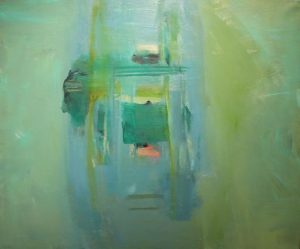 movement evoked, I knew that the diptych was … about … two people’s life journey,” Jeffcoat explained at The Sound of Color opening at Sanibel’s Watson MacRae Gallery in 2016. “They are separate, but traveling together. To me, an expedition does not mean that there are not trials, ups and downs, but when one looks back over, it is beautiful.”
movement evoked, I knew that the diptych was … about … two people’s life journey,” Jeffcoat explained at The Sound of Color opening at Sanibel’s Watson MacRae Gallery in 2016. “They are separate, but traveling together. To me, an expedition does not mean that there are not trials, ups and downs, but when one looks back over, it is beautiful.”
In the final years of her life, Hollis gave herself over to expressing 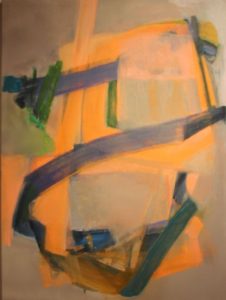 her own highly-personal reactions to nature-based sounds and the ripples of color they spawned. While Jeffcoat’s viewers can never experience the precise emotions that gave rise to her deeply evocative compositions, the body of work she leaves behind provides myriad portals of resonance and connectivity.
her own highly-personal reactions to nature-based sounds and the ripples of color they spawned. While Jeffcoat’s viewers can never experience the precise emotions that gave rise to her deeply evocative compositions, the body of work she leaves behind provides myriad portals of resonance and connectivity.
Through the centuries, artists have strived to develop new and important ways of seeing and experiencing our environment. In this regard, Jeffcoat’s oeuvre affords present and future generations a novel and heretofore-unexplored platform for examining their own relationships with nature, the ecology and the products 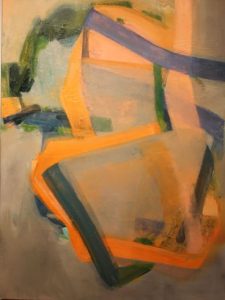 of their senses, including those of taste and smell. This is Hollis Jeffcoat’s legacy. It’s why her work is sure to endure.
of their senses, including those of taste and smell. This is Hollis Jeffcoat’s legacy. It’s why her work is sure to endure.
Her paintings can be found today in numerous private and corporate collections, as well as the permanent collections of the Metropolitan Museum of Art, Brooklyn Museum, The Morgan Library, The Contemporary Museums of Art in Montreal and Quebec City, and the Pierre Matisse Collection.
October 13, 2018.













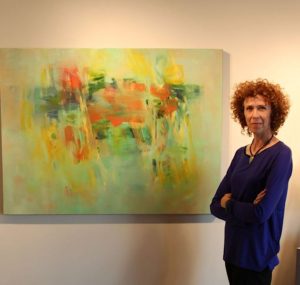

 Tom Hall is both an amateur artist and aspiring novelist who writes art quest thrillers. He is in the final stages of completing his debut novel titled "Art Detective," a story that fictionalizes the discovery of the fabled billion-dollar Impressionist collection of Parisian art dealer Josse Bernheim-Jeune, thought by many to have perished during World War II when the collection's hiding place, Castle de Rastignac in southern France, was destroyed by the Wehrmacht in reprisal for attacks made by members of the Resistance operating in the area. A former tax attorney, Tom holds a bachelor's degree as well as both a juris doctorate and masters of laws in taxation from the University of Florida. Tom lives in Estero, Florida with his fiancee, Connie, and their four cats.
Tom Hall is both an amateur artist and aspiring novelist who writes art quest thrillers. He is in the final stages of completing his debut novel titled "Art Detective," a story that fictionalizes the discovery of the fabled billion-dollar Impressionist collection of Parisian art dealer Josse Bernheim-Jeune, thought by many to have perished during World War II when the collection's hiding place, Castle de Rastignac in southern France, was destroyed by the Wehrmacht in reprisal for attacks made by members of the Resistance operating in the area. A former tax attorney, Tom holds a bachelor's degree as well as both a juris doctorate and masters of laws in taxation from the University of Florida. Tom lives in Estero, Florida with his fiancee, Connie, and their four cats.